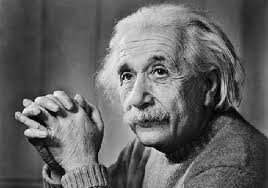The following was written at the Dep’t of Motor Vehicles while waiting for my number to be called.
Time, and space too, are “merely” human constructs. It’s only in your head. So don’t worry so much! Don’t waste your time!
Humankind’s conception of time has changed quite a bit over the ages. If time had a “real” existence it wouldn’t change so much: from the caveman’s squinting at the morning sun saying “Hey! There’s the sun. Same as yesterday. Gee, I hope I’m not late for our morning saber-tooth tiger hunt” – to sundials, lunar calendars, solar calendars, to iridium timepieces, up to the latest Microsoft Outlook Express appointment books – our concept of time has grown increasingly measured and obsessive. Technical developments like mechanical clocks and digital wristwatches have changed our lives. “None for the better,” you might say. The Industrial Revolution graced us with the baneful notion of “productivity”, which I won’t discuss because I don’t have the time.
Time is a human construction, an inherited bundle of nerve connections that helps us negotiate our long and winding ways through this earthly paradise – that is, until we get to Heaven, which, of course, is e-ternal and “off the clock”. Currently, our conception of time and space is best represented by a rigid, four dimensional set of coordinates, a lattice – which Einstein tells us is only relative, and which can bend a little too, especially when you’re moving fast.
Certainly the mathematically developed notions of time and space and their derivatives (velocity and acceleration) do a decent job of explaining the workings of this (current) universe.
For further understanding of Father Time (Why is time a man and not a lady?) I consulted Albert Einstein. I figure it is always best to go straight to the source, to get it from the horse’s mouth (no disrespect to Albert – or to the horses). From the get-go, Einstein saw that he needed to clarify the notion of simultaneity, of different times in different places, and to upend the prevailing (Newtonian) concept of time as being immutable and absolute.
Einstein wrote a number of books for the layman. I’ve been peeking and pecking, browsing and carousing through his books for years. Generally I quit somewhere after the third equation. But Einstein is definitely worth the effort. There is always a brilliance in his thought process and in his direct and concise explanations, albeit translated from the German and couched in formalistic, sometimes clumsy idioms. All the same, Einstein’s lengthy tales of clocks, railway cars, and train embankments are hypnotic, almost poetic. Einstein presents his postulates and defines his terms in classical, Euclidian style – even as he moves us past Euclidian geometry. His book Relativity, written in 1916, is a gem.
“Why,” you ask, “do you need to understand the theory of General Relativity? What do you need it for?”
My reply is that maybe you don’t need it. But if you want to know what is going on, what this world is made of and how it works, and how it started and how big is it, and what’s going to happen, well……” (to quote George Jones) “If you got the money, honey, I’ve got the time.”


 Sympatico: Humans are hard-wired over years (not so many) of evoluti0n to understand time and space as dimensions that are absolutely rigid and immutable. We imagine a coordinate system – like some three-dimensional graph paper – stretching out indefinitely in both directions. Time is usually visualized as a giant clock ticking regularly, our timeclocks at work, our digital displays, our lifetimes measured out in hours and minutes. Time goes on forever and forever. It’s a homo sapiens thing, a human failing. I don’t think animals have any conception of time as we do……..
Sympatico: Humans are hard-wired over years (not so many) of evoluti0n to understand time and space as dimensions that are absolutely rigid and immutable. We imagine a coordinate system – like some three-dimensional graph paper – stretching out indefinitely in both directions. Time is usually visualized as a giant clock ticking regularly, our timeclocks at work, our digital displays, our lifetimes measured out in hours and minutes. Time goes on forever and forever. It’s a homo sapiens thing, a human failing. I don’t think animals have any conception of time as we do……..













